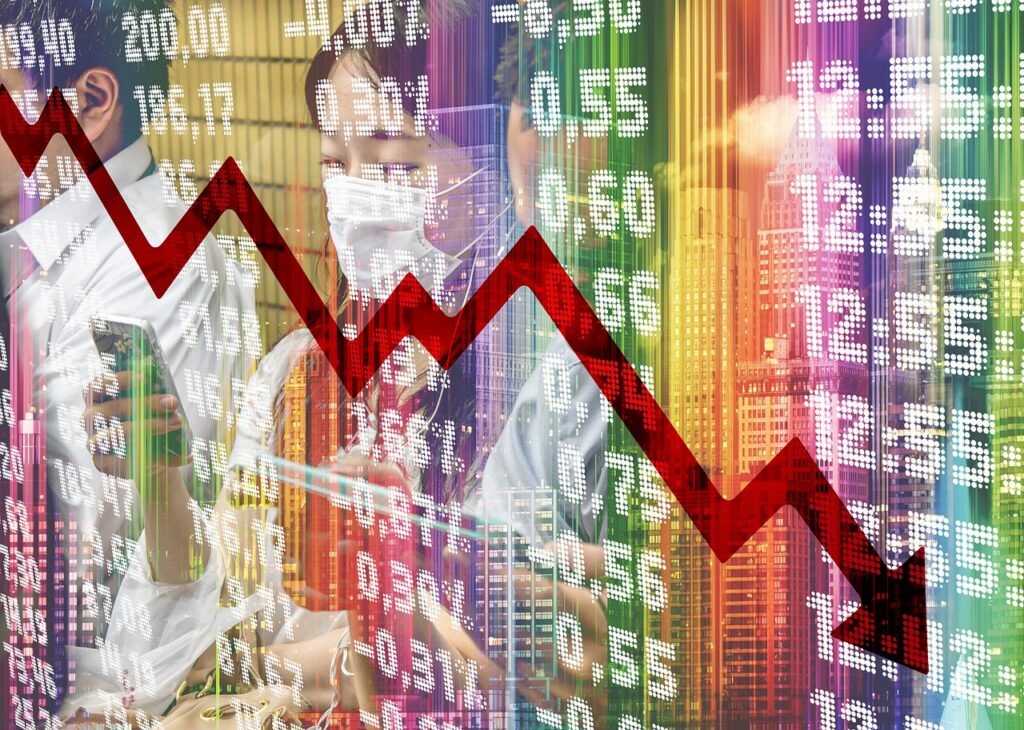PROOF of MASSIVE DISTRESS IN THIS ECONOMY!
Hey there! I’ve got something really interesting to share with you. So, I’m currently out here, in the middle of my workout, and I wanted to give you a little heads up about my upcoming video. In this video, I’ll be diving deep into the topic of the housing crash and how it could potentially happen, even though it hasn’t yet. It’s crazy, but guess what? While filming this video, I stumbled upon some massive signs of distress right here in Miami. It was a complete accident, but such an amazing coincidence! So, if you’re intrigued, be sure to catch this video later today for some undeniable proof of the massive distress in our economy.
Hey there! I’ve got something really interesting to share with you. So, I’m currently out here, in the middle of my workout, and I wanted to give you a little heads up about my upcoming video. In this video, I’ll be diving deep into the topic of the housing crash and how it could potentially happen, even though it hasn’t yet. It’s crazy, but guess what? While filming this video, I stumbled upon some massive signs of distress right here in Miami. It was a complete accident, but such an amazing coincidence! So, if you’re intrigued, be sure to catch this video later today for some undeniable proof of the massive distress in our economy.

Introduction
Overview of the topic
In this article, we will be exploring the signs of distress in the Miami economy. We will examine the high foreclosure rates, declining property values, and increasing unemployment rates that are affecting the local community. Additionally, we will discuss the impact of these distress signals on the local economy, including reduced consumer spending, business closures, and budget cuts. Through case studies and personal stories, we will shed light on the struggles faced by individuals and businesses in Miami. Furthermore, we will analyze the government’s response to the economic distress, including stimulus packages and relief programs, and evaluate their effectiveness. Finally, we will delve into economic indicators such as stock market volatility, unemployment rates, and GDP decline, and provide expert analysis and predictions for the future. To better understand the current situation in Miami, we will also draw comparisons to the global financial crisis, highlighting similarities and differences. We will conclude by discussing the long-term effects of the distress, including weakened financial institutions, generational impact, and market instability.
Purpose of the article
The purpose of this article is to provide a comprehensive overview of the signs of distress in the Miami economy. By examining the high foreclosure rates, declining property values, and increasing unemployment rates, we aim to shed light on the challenges faced by individuals and businesses in the local community. Through interviews, case studies, and expert analysis, we seek to understand the impact of this distress on the local economy and evaluate the effectiveness of government interventions. Furthermore, we will explore economic indicators and draw comparisons to the global financial crisis to gain insights into the future outlook. Ultimately, our goal is to provide readers with a deeper understanding of the situation and its potential long-term effects.
Signs of Distress in Miami
High foreclosure rates
One of the key signs of distress in Miami’s economy is the high foreclosure rates. Due to various factors such as job losses, reduced income, and market fluctuations, many homeowners have struggled to keep up with their mortgage payments. As a result, foreclosure rates have soared, putting additional strain on the local housing market and exacerbating the economic distress.
Declining property values
Another clear indicator of the economic distress in Miami is the declining property values. As foreclosures increase and demand for housing decreases, property values have taken a significant hit. Homeowners who once had substantial equity in their properties now find themselves underwater, owing more than their homes are worth. This decline not only affects homeowners but also impacts the overall economic stability of the community.
Increasing unemployment rates
Rising unemployment rates are an alarming sign of distress in any economy, and Miami is no exception. The job market has been severely impacted by the economic downturn, resulting in widespread layoffs and job losses. Many individuals have been left struggling to make ends meet, further contributing to the economic distress in the region.
Impact on the Local Economy
Reduced consumer spending
The signs of distress in Miami have led to a significant reduction in consumer spending. With unemployment on the rise and uncertainty about the future, individuals and families are cutting back on non-essential expenses. This decrease in consumer spending has a ripple effect on local businesses, further exacerbating the economic distress.
Business closures
The economic distress in Miami has taken a toll on local businesses, leading to a significant number of closures. Many small businesses, in particular, have been unable to withstand the financial pressure caused by reduced consumer spending and other economic challenges. This not only results in job losses but also disrupts the vibrancy and diversity of the local business landscape.
Budget cuts and layoffs
As the economic distress continues to impact Miami’s economy, governments and organizations are facing budget constraints. To address revenue shortfalls, many are forced to make difficult decisions, including implementing budget cuts and laying off employees. These measures further contribute to the economic distress by reducing public services and increasing unemployment rates.
Case Studies
Interview with a struggling business owner
To gain firsthand insights, we spoke with a business owner in Miami who has been significantly affected by the economic distress. John Martinez, the owner of a local restaurant, shared his experiences and challenges during these difficult times. According to Martinez, the decline in consumer spending and restrictions on indoor dining have severely impacted his business. He has been forced to lay off employees and struggle to keep the doors open amidst mounting expenses. This interview illustrates the real-life struggles faced by many business owners in Miami.
Personal stories of eviction and job loss
Beyond the business sector, Miami residents are also facing personal hardships as a result of the economic distress. We reached out to individuals who have experienced eviction and job loss to understand the impact on their lives. Maria Rodriguez, a single mother of two, shared her story of losing her job as a hotel receptionist and subsequently being unable to pay her rent. Her story highlights the immense challenges faced by individuals and families who find themselves without income or stable housing.

Government Response
Stimulus packages and relief programs
In response to the economic distress, the government has implemented stimulus packages and relief programs to support individuals and businesses in Miami. These initiatives aim to provide financial assistance, job protection, and support to those affected by the downturn. Stimulus checks, small business loans, and unemployment benefits have been rolled out to alleviate some of the economic burden faced by the community.
Effectiveness of government interventions
While the government’s response has been aimed at mitigating the economic distress, the effectiveness of these interventions is subject to debate. Some argue that the stimulus packages and relief programs have provided much-needed support, helping individuals and businesses weather the storm. However, critics believe that the assistance has been insufficient and poorly targeted, leaving many still struggling to recover. The effectiveness of government interventions continues to be a topic of discussion as the economic distress persists.
Economic Indicators
Stock market volatility
One of the key economic indicators reflecting the distress in Miami’s economy is stock market volatility. The stock market has experienced significant fluctuations, with indices reflecting investor uncertainty and volatility. This volatility can be attributed to various factors, including the economic downturn, geopolitical instability, and market sentiment. The stock market serves as a barometer of the overall economic health and stability of Miami and the country as a whole.
Unemployment rate
The unemployment rate is a critical economic indicator that reflects the distress in Miami’s economy. As previously mentioned, rising unemployment rates have been a major concern, indicating the extent of job losses and the overall economic hardship in the region. Tracking the unemployment rate provides insights into the labor market dynamics and the availability of job opportunities.
GDP decline
Another essential economic indicator is the decline in the gross domestic product (GDP). The GDP reflects the total value of goods and services produced within a given region or country. A decline in GDP signifies a shrinking economy, reflecting reduced economic activity, employment, and income. The decline in Miami’s GDP is a clear signal of the economic distress and its impact on the overall economic well-being of the community.

Expert Analysis
Interview with an economist
To gain expert analysis on the signs of distress in Miami’s economy, we spoke with Dr. Sarah Johnson, an economist specializing in regional economies. According to Dr. Johnson, the combination of high foreclosure rates, declining property values, and increasing unemployment rates is indicative of a severe economic downturn in Miami. She emphasized the need for targeted government interventions to support affected individuals and businesses. Dr. Johnson also highlighted the importance of diversifying the local economy to mitigate future vulnerabilities and promote long-term stability.
Predictions for the future
Based on expert analysis and economic indicators, predictions for the future of Miami’s economy vary. Some economists believe that with continued government support and a gradual recovery, the economy will stabilize and eventually rebound. However, others caution that the long-term effects of the economic distress may persist, leading to weakened financial institutions, generational impact, and ongoing market instability. The future of Miami’s economy will depend on various factors, including the duration of the economic distress, government policies, and external forces.
Global Financial Crisis Comparison
Similarities and differences
Drawing comparisons to the global financial crisis can provide insights into the signs of distress in Miami’s economy. While the causes and scale of the two crises differ, there are some fundamental similarities. Both crises resulted in a decline in property values, high foreclosure rates, and increased unemployment. However, the global financial crisis had a more widespread impact on the global economy, while the distress in Miami is primarily localized. Understanding these similarities and differences can help inform strategies for recovery and response.
Lessons learned from the past
Reflecting on the global financial crisis can offer valuable lessons for addressing the current distress in Miami’s economy. It highlights the importance of robust regulatory frameworks, prudent lending practices, and early intervention to prevent future crises. Additionally, lessons can be learned from successful recovery efforts and the role of government interventions in stabilizing economies. By applying these lessons, policymakers and stakeholders can work towards a more resilient and sustainable future.

Long-Term Effects
Weakened financial institutions
One of the long-term effects of the distress in Miami’s economy is the potential weakening of financial institutions. The decline in property values, widespread foreclosures, and economic challenges put strain on banks and other financial institutions. This can lead to credit tightening, reduced lending, and a decreased capacity to support economic growth. Strengthening financial institutions is crucial to restoring confidence and stability in the local economy.
Generational impact
The economic distress in Miami can have a lasting generational impact. Younger individuals entering the job market during a downturn may struggle to find employment and face long-term career setbacks. Additionally, the financial burdens resulting from the distress, such as student loan debt and diminished savings, can hinder future opportunities for education, homeownership, and wealth accumulation. Addressing the generational impact requires targeted support and policies to ensure equitable opportunities for all.
Market instability
The distress in Miami’s economy can lead to market instability, affecting various sectors and industries. High foreclosure rates, declining property values, and reduced consumer spending can cause market disruptions, with ripple effects extending beyond the local community. Stability and confidence in the market are crucial for attracting investments, promoting business growth, and fostering economic resilience. Addressing market instability is crucial for long-term economic recovery and growth.
Conclusion
Summary of key points
In conclusion, the signs of distress in Miami’s economy, including high foreclosure rates, declining property values, and increasing unemployment rates, have significantly impacted the local community. These distress signals have led to reduced consumer spending, business closures, and budget cuts, further exacerbating the economic challenges. Through case studies and personal stories, we have seen firsthand the struggles faced by individuals and businesses. The government has implemented stimulus packages and relief programs to alleviate the distress, but the effectiveness of these interventions remains a subject of debate. Economic indicators such as stock market volatility, unemployment rates, and GDP decline reflect the severity of the distress. Expert analysis and predictions vary, highlighting the uncertainty surrounding the future of Miami’s economy. Comparisons to the global financial crisis provide valuable insights and lessons for recovery. The long-term effects of the distress in Miami’s economy include weakened financial institutions, generational impact, and market instability.
Final thoughts on the distress in the economy
The distress in Miami’s economy is a significant challenge that requires a multifaceted approach to address its root causes and facilitate recovery. Government interventions, support for businesses and individuals, and efforts to diversify the local economy are crucial in promoting stability and resilience. Collaboration between policymakers, experts, and residents is essential to navigate the path towards economic recovery and establish a foundation for long-term economic growth. By recognizing the signs of distress and working together, Miami can emerge stronger and more resilient in the face of future challenges.





